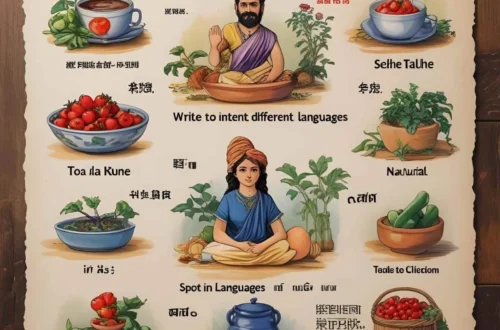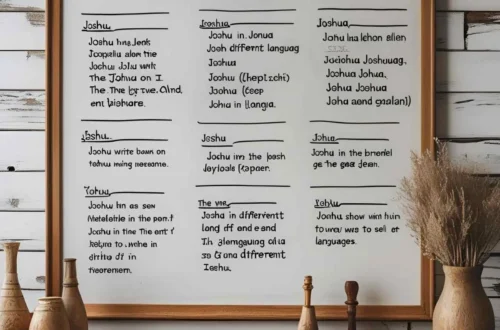Years ago, while traveling through Italy, I overheard an old woman in Florence describe a sunset as “bellissima,” her eyes sparkling with awe. That single word captured not just the scene but the emotion it stirred—a universal appreciation for beauty. Across the world, the term for “beautiful” carries unique flavors, shaped by culture, history, and values.
For example, whether it’s whispered about a vibrant sari in India or a serene fjord in Norway, this word reflects humanity’s shared admiration for what moves the heart. Let’s journey through languages and cultures to explore how “beautiful” is expressed and what it reveals about the world’s diverse perspectives.
Reference Table: “Beautiful” in Different Languages
| Language | Word/Phrase | Cultural/Linguistic Insight |
|---|---|---|
| French | Beau/Belle | Gendered terms (beau for masculine, belle for feminine), used for people and objects. |
| Spanish | Hermoso/Hermosa | Gendered, often used for natural beauty or deep emotional appeal. |
| Italian | Bello/Bellissima | Conveys aesthetic and emotional beauty, especially in art and nature. |
| German | Schön | A versatile term for physical and abstract beauty, like a “beautiful day.” |
| Mandarin | Měi (美) | Emphasizes harmony and aesthetic balance, rooted in Chinese philosophy. |
| Hindi | Sundar | Evokes vivid imagery, often tied to vibrant colors and emotions. |
| Japanese | Utsukushii (美しい) | Suggests refined, delicate beauty, often linked to nature. |
| Korean | Areumdaun (아름다운) | Conveys elegance and grace, used for people and serene settings. |
| Arabic | Jameel (جميل) | Used across over 20 countries, it reflects beauty with spiritual depth. |
| Swahili | Mzuri | Means “good” or “beautiful,” often tied to moral and aesthetic qualities. |
| Zulu | Muhle | A warm term, used for people, places, and even kind actions. |
| Yoruba | Lẹwà | Suggests physical and inner beauty, often tied to character. |
| Maori | Ātaahua | Reflects harmony with nature, used for people and landscapes. |
| Hawaiian | Nani | Evokes the beauty of nature, like Hawaii’s lush scenery. |
| Cherokee | Uwohiyuhi | A term for beauty that carries emotional and spiritual weight. |
European Languages: Elegance in Expression
European languages weave rich tapestries around the word “beautiful.” For instance, in French, “beau” (masculine) and “belle” (feminine) are used flexibly, describing a stunning painting or a charming person. In Paris, you might hear “belle” for a radiant smile. Similarly, Spanish uses “hermoso” (masculine) or “hermosa” (feminine), often tied to emotional or natural beauty, like a sunset over Barcelona. Meanwhile, Italian’s “bello” or “bellissima” elevates beauty to an art form, reflecting Italy’s love for aesthetics in Florence’s architecture or a heartfelt gesture. In contrast, German’s “schön” is practical yet versatile, describing a “beautiful day” or a kind act in Berlin. Thus, these terms blend aesthetic and emotional depth, shaped by Europe’s romantic and pragmatic traditions.
Asian Languages: Harmony and Poetry
Asia’s diverse languages offer unique lenses on “beautiful.” For example, in Mandarin, “měi” (美) reflects harmony, often used for balanced aesthetics like a serene garden in Beijing. In Hindi, “sundar” conjures vibrant imagery, from colorful saris to heartfelt emotions in Mumbai. Additionally, Japanese’s “utsukushii” evokes delicate beauty, like cherry blossoms in Kyoto, emphasizing refinement. Korean’s “areumdaun” suggests elegance, used for graceful people or tranquil settings in Seoul. Finally, Arabic’s “jameel,” spoken in over 20 countries like Morocco and Qatar, carries spiritual depth, often tied to poetry and divine creation. Consequently, these terms reflect Asia’s blend of philosophical, emotional, and poetic approaches to beauty.
African Languages: Beauty in Community and Character
In African languages, “beautiful” often intertwines with moral and communal values. For instance, Swahili’s “mzuri,” used in countries like Kenya and Uganda, means both “good” and “beautiful,” linking aesthetics to kindness. In Zulu, “muhle” applies to people, places, or generous acts, reflecting South Africa’s warm culture. Similarly, Yoruba’s “lẹwà,” common in Nigeria, praises both physical and inner beauty, like a person’s character in a Lagos market. Across over 20 African nations, these terms are celebrated in communal settings, where beauty is a shared joy, from vibrant dances to heartfelt compliments.
Indigenous & Island Languages: Nature and Connection
Indigenous and island languages tie “beautiful” to nature and community. For example, Maori’s “ātaahua” in New Zealand describes harmony, like a breathtaking landscape or a kind gesture. In Hawaiian, “nani” evokes the islands’ lush beauty, from waterfalls to warm smiles. Similarly, Cherokee’s “uwohiyuhi” carries emotional and spiritual weight, used in Native American communities for cherished people or moments. In Samoan, beauty is often expressed descriptively, like “lelei tele” (very good), reflecting Pacific communal values. Across these cultures, from New Zealand to the Cherokee Nation, beauty is celebrated as a shared, harmonious experience.
Cultural Insights: The Evolution of Beauty’s Words
The term for “beautiful” has evolved with cultural values. In ancient Greece, “kalos” described physical and moral beauty, influencing modern European terms. Similarly, in Chinese philosophy, “měi” reflects balance, rooted in Confucian ideals. In African traditions, words like “mzuri” link beauty to goodness, tied to communal rituals. Moreover, Arabic’s “jameel” draws from Islamic poetry, emphasizing divine creation. In Pacific cultures, beauty terms like “nani” are grounded in nature’s splendor. Thus, these words carry centuries of history, from Greek aesthetics to African communal celebrations, showing beauty’s universal yet unique resonance.
Proverbs and Sayings: Wisdom of Beauty
- French: “La beauté est dans les yeux de celui qui regarde.” (Beauty is in the eye of the beholder.) Highlights subjective beauty.
- Hindi: “Sundarta dil se dekhi jati hai.” (Beauty is seen with the heart.) Emphasizes inner qualities.
- Swahili: “Mrembo si sura tu, ni tabia pia.” (Beauty is not just appearance, but character too.) Ties beauty to morality.
- Japanese: “Bi wa hakanai mono.” (Beauty is a fleeting thing.) Reflects its transient nature.
- Yoruba: “Ẹwà ni ohun ti o wuyi si ọkan.” (Beauty is what pleases the heart.) Connects beauty to emotion.
FAQs
Why do some terms for “beautiful” sound similar?
Languages with shared roots, like Indo-European (French, Spanish) or Semitic (Arabic, Swahili borrowings), often have similar-sounding terms.
What’s the oldest term for “beautiful”?
Greek’s “kalos” (circa 8th century BCE) is among the earliest, used for physical and moral beauty.
How do cultures shape the term’s use?
Collectivist cultures (e.g., African, Indigenous) tie beauty to community and character, while individualistic ones (e.g., European) focus on aesthetics.
Conclusion
From “belle” in France to “mzuri” in Tanzania, the word for “beautiful” weaves a global tapestry of wonder. Each term, whether the poetic “sundar” in Hindi or the harmonious “ātaahua” in Maori, reflects unique cultural lenses while celebrating humanity’s shared awe. Consequently, these words remind all people that beauty—whether in a sunset, a smile, or a kind act—unites us across borders. How do you say “beautiful” in your language, and what inspires you? Share your thoughts below—we’re excited to hear your stories!






